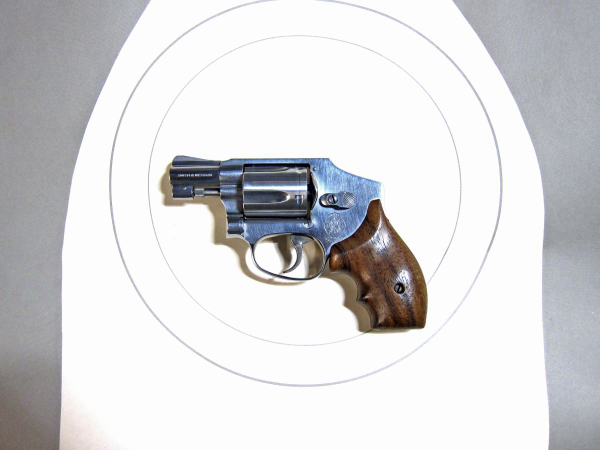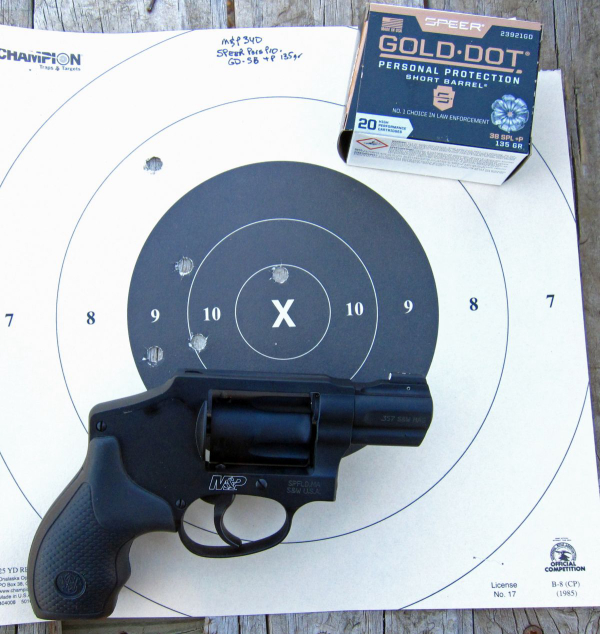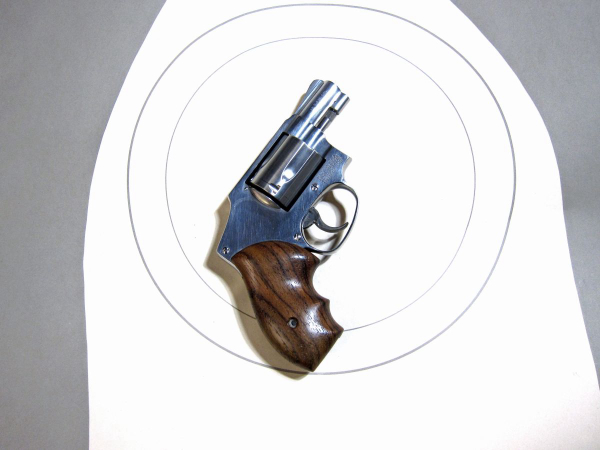
In my day, the S&W Centennial – later known as the Model 40 in steel and Model 42 in Airweight – was already a collector’s item. It was discontinued in 1974. I got a stainless-steel Chief’s Special Model 60 for “law enforcement price” in 1978. A coworker “dehorned” the gun by excising the hammer spur.
It was the closest thing we had to the concealed-hammer (not “hammerless”) Centennials.
Introduced in 1952, the Centennial was said to be a response to Rex Applegate’s complaint about another “pocket” Smith & Wesson, one or another form of the old “Lemon Squeezer.” The story goes that he had one of the top-break pocket revolvers, some allege in 38 S&W (not 38 Special). He needed it in an emergency and due to feeble ammunition, there was a failure to stop – or so they say.
He likely was not alone, as the Chief’s Special was already popular by the time the snag-free Chief’s analog was rolled out. One source correctly notes that the new Centennials (1952 being the firm’s 100th Anniversary) combined the snub Chief’s Special with the old Safety Hammerless revolvers.
The originals had a grip safety, a “squeeze lever (in) the backstrap” – requiring a firm grip and giving renewal to the term “Lemon Squeezer” for the new pocket artillery.
The Airweights were first (very light, with aluminum cylinders). The all-steel Centennial weighed in nearly seven ounces more than the original flyweight guns. In 1957, the model number scheme came in at S&W.
The factory made “high horn” stocks for the new guns. These are not a fit for the conventional J-frame guns. The guns weren’t as popular as the Chief’s Special and the later Bodyguard (a hump-backed Chief’s Special with access to the hammer for cocking). For that reason, the Centennial line was dropped in 1974.
Between then and 1990, people began to predominantly shoot double action revolvers by trigger-cocking them (shooting “double action”). The PPC crowd had long before abandoned single action shooting for the fifty- and 25-yard stages of the match. The lighter, shorter trigger press was no advantage as the rhythm of rolling a double action trigger back as it cycled the cylinder through its movement fed the course of fire.
And there was the practical aspect of self-defense; having no access to the hammer prevented a BS accusation post-shooting that it was an “accident because the shooter negligently cocked the gun, creating a “hair trigger” situation.”
Crap and corruption were kept from entering the revolver’s frame and action. The gun didn’t snag on the draw. Finally recognizing the problem in deleting the Centennial, in 1990 S&W introduced a stainless-steel Centennial, the Model 640.
The gun pictured here is from that era, a 38 Special l double action revolver rated for +P. It has the standard for the era 1 7/8” barrel and a 5-shot cylinder which is properly fluted.
The gun features a .312” wide smooth “combat” trigger, a square notch rear sight, and a serrated ramp front sight. These were offered until 1996, after which it changed again.
In 1996, S&W introduced the replacement for the 640, the 640-1. Chambered in 357 Magnum, it had a heavier, underlugged barrel and it was quite a handful. The 38 caliber versions were relegated to a small production batch of M640-2 guns (NYPD specified in 38 Special only) and the Airweight 38s, the Model 442 (black carbon steel barrel and cylinder) and Model 642 (stainless steel barrel and cylinder).

Later guns include the M&P340, a 357 Magnum Airweight with an improved front sight and a blackened stainless-steel cylinder.

This M640, produced in or after 1994, was picked up with factory installed “Uncle Mike’s Boot Grips” about 10 years after its production. The action is stiff; though fired some, there’s no evidence it was ever carried and it wasn’t fired much. The sample was later fitted with "Model 40" Rosewood Secret Service stocks from Eagle Grips.
At this point, it appears that the Centennial is here to stay.
— Rich Grassi